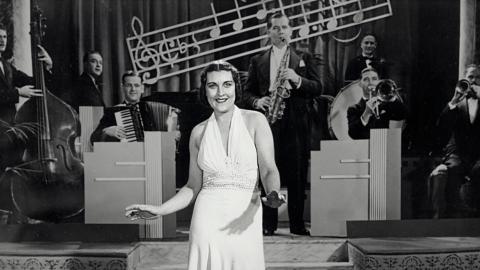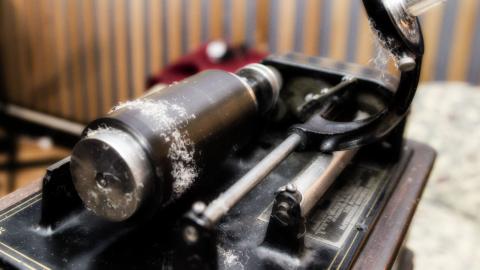
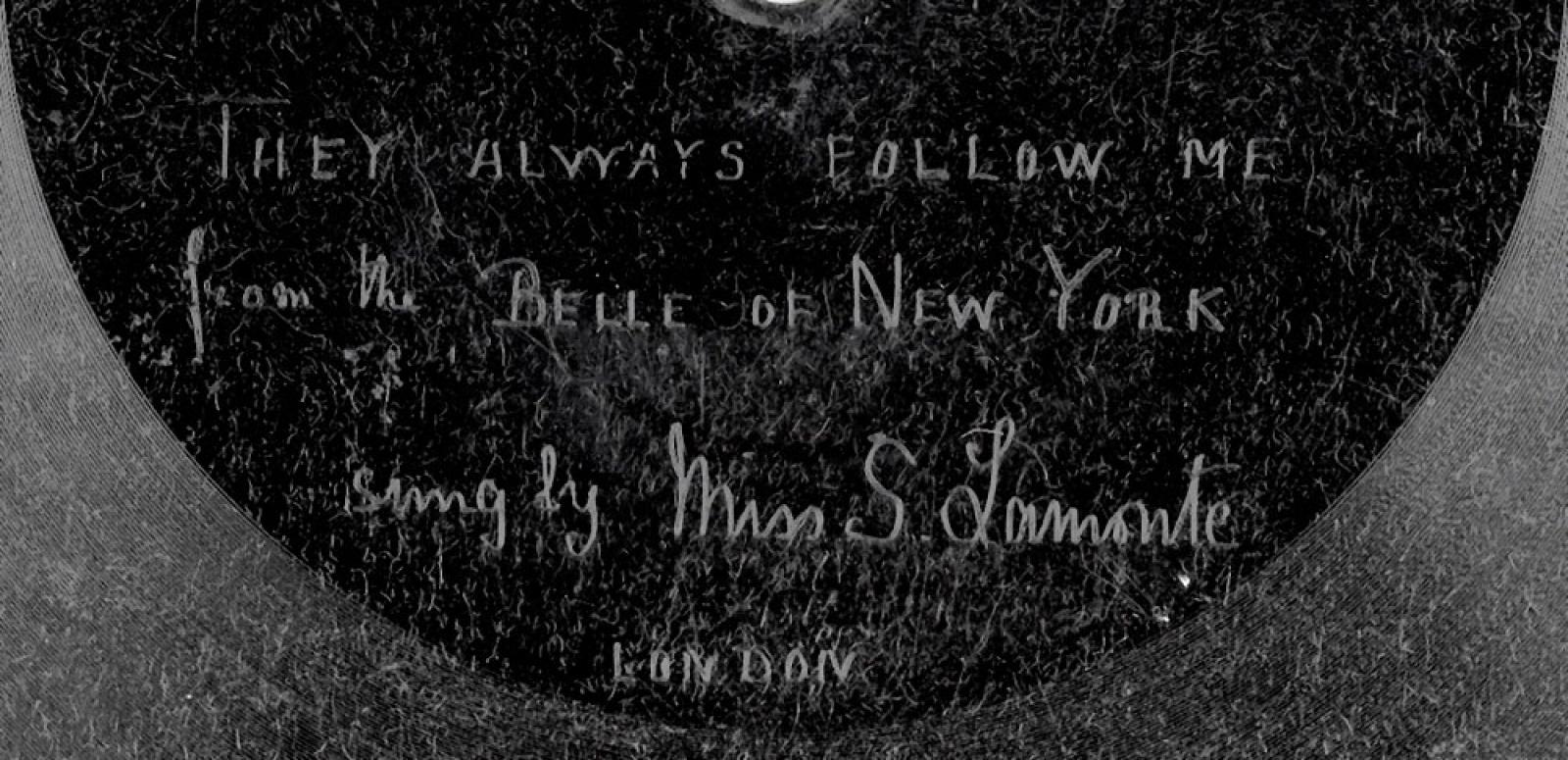
Donation of rare disc
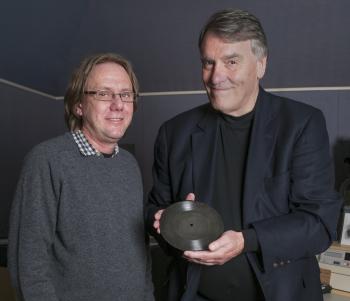
The work of the first known Australian to make a commercially released recording, the long forgotten Syria Lamonte, is now preserved by the NFSA thanks to the kind donation of an 1898 recording acquired by Roger Neill.
Roger heard about the sale of the record at an upcoming auction in the Thames Valley, England, and asked a friend to inspect it for condition and bid for him. Knowing that it would be a valuable addition to the national audiovisual collection, he then kindly donated the recording to the NFSA.
‘I noticed that the NFSA didn’t have any recording by this pioneer in recorded sound’, he said.
'They Always Follow Me’ from The Belle of New York, sung by Miss S Lamonte on 27 September 1898. Donated by Roger Neill. NFSA title: 1251712
Recorded on the E Berliner label on 27 September 1898, this rare disc contains the song 'They Always Follow Me’.
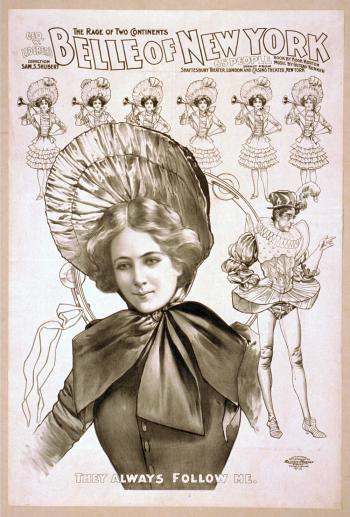
Originally from the 1897 musical comedy The Belle of New York, it tells the story of a young Salvation Army woman who is always attracting men’s attention when trying to get them to repent their sins and find God.
According to Roger Neill, Syria Lamonte’s Berliner recordings have been somewhat ignored by collectors: 'As well as being rare, they have all the disadvantages of primitive sound. The Gramophone Company’s early recordings were made using the etched zinc process, which produced a scrawny and noisy result, but the sound improved greatly after 1900 when they acquired rights to record by cutting directly into a wax disc.’
Roger Neill is an expert on the innovators, artists, writers and musicians of the late 19th and early 20th centuries. He has been significant in promoting an awareness of early recordings of vocal music including his involvement in the development of the Historic Masters release of Dame Nellie Melba: The First Recordings. He has a long-standing relationship with the NFSA, providing advice and newly discovered information on early recordings.
‘Studying early recordings gives us a unique window into performing practice in a bygone age. We do not have to imagine what they sounded like, as we do with Mozart, Schubert and others of the pre-recording era. We can listen to how they actually did it,’ he explained.
Not a star, but a pioneer
'While she was by no means a major star, Syria Lamonte was nevertheless an admired performer with a thriving career in light opera, musical comedy and music hall, and was an important pioneer in the fledgling recording industry – not someone to be a mere footnote in musical history' - Roger Neill, 'Rediscovering Syria Lamonte: Pioneer Recording Artist’, The Record Collector, March 2014
Born in Sydney in 1869, Sarah Cohen was a soprano who trained in Melbourne with singing teachers Pietro Cecchi (who also taught Dame Nellie Melba) and Lucy Chambers (sometimes known as the ‘Australian Marchesi’ after the celebrated teacher of singers, Mathilde Marchesi).
Sarah probably first performed using the stage name Syria Lamont in 1892 whilst performing with the English touring theatre company of Mrs Bernard Beere in Melbourne. In the early part of her career, Syria performed at important venues such the Melbourne Opera House and toured with opera companies around Australia before leaving for London in 1896 to complete her music studies. In 1895, she added the letter ‘e’ to her stage name, becoming Syria Lamonte.
Once in London, she secured a three-year contract with the Tivoli and Oxford music halls. Between 1896 and 1900, she was performing in music halls across Great Britain and toured to Vienna, Bucharest, St Petersburg and Paris. In 1897, she also performed in South Africa.
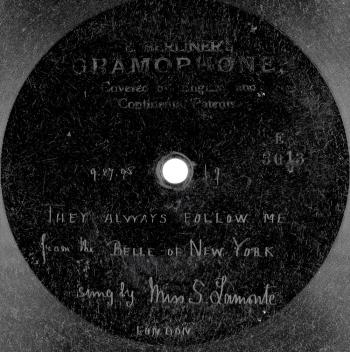
Between August 28 and 3 October 1898 in London, Lamonte recorded a series of songs with Fred Gaisberg, a recording engineer for The Gramophone Company, on the E Berliner’s Gramophone record label. Gaisberg was in London to start up the first UK studio for The Gramophone Company.
Gaisberg’s recording of Syria Lamonte seems to have come about as a result of her working next door to the recording studio on Maiden Lane in Covent Garden, in a restaurant called Rules.
The Syria Lamonte recordings with the E Berliner Gramophone record label in 1898 are significant for a number of reasons.
First, these recordings are one of the earliest, if not the earliest, commercially released recordings made by an Australian musician. Dame Nellie Melba’s first commercially released recordings were made with The Gramophone Company in 1904.
Back in Australia, recordings of Australian musicians were being made at the same time as Syria’s Berliner session, however these were one-off recordings on wax cylinder. In the late 1890s in Australia it was possible to go into a music store such as Allan and Co. or EJ Thwaite’s Edison Phonograph Company and purchase a wax cylinder containing a song of your choice. The song would be recorded on the spot, with only one copy made.
Secondly, Syria Lamonte is also is believed to be the first professional female singer to be recorded on flat disc rather than cylinder in Britain. Emile Berliner, a German-born American inventor, was responsible for making the earliest commercial disc recordings and the recordings made in his London studio were the earliest disc recordings made in Britain. Previously it had been thought that Syria was the first person to have been recorded by Gaisberg in The Gramophone Company’s London studio, however the first artists to be recorded there are now thought to be C Burgess, Mr Castle and AA Umbach of the Trocadero Orchestra on 8 August 1898.
Thirdly, despite having an extensive career as a live performer, it appears that she was only recorded twice in her career – in 1898 for the E Berliner record label and then for the Columbia label in America after she moved there in 1906. These Columbia recordings are not known to have survived.
The NFSA is profoundly grateful to Roger Neill for his donation, and for his research into Syria Lamonte.
The National Film and Sound Archive of Australia acknowledges Australia’s Aboriginal and Torres Strait Islander peoples as the Traditional Custodians of the land on which we work and live and gives respect to their Elders both past and present.
